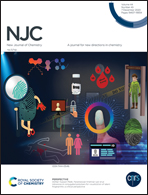Imidacloprid exposure suppresses cytokine production and neutrophil infiltration in TLR2-dependent activation of RBL-2H3 cells and skin inflammation of BALB/c mice
Abstract
As the “first responders” of the immune system, mast cells immediately respond to invading pathogens via TLR2-mediated recognition of pathogens and play an important role in the host's immune responses required to clear the infection. Imidacloprid is a neonicotinoid agent that can suppress immune responses in mice. However, limited information is available on its impact on TLR-mediated mast cell activation at the beginning of an infection. In this study, the effects of imidacloprid on TLR2-activated rat mast cell/basophil cell line RBL-2H3 (RBL-2H3 cells) and TLR2-induced skin inflammation in BALB/c mice were determined, after which we measured the release of allergic mediators, Ca2+ influx, production of tumor necrosis factor-α (TNF-α) and interleukin-6 (IL-6), and neutrophil infiltration. The results showed that 10−3 to 10−5 M imidacloprid significantly decreased TNF-α and IL-6 production in TLR2-dependent activation of RBL-2H3 cells. Moreover, 10−3 to 10−4 M imidacloprid in 100 μL of vehicle suppressed cytokine production and neutrophil infiltration in a TLR2-dependent skin inflammation model of BALB/c mice. Our work indicates that imidacloprid poses a possible health risk to hosts as it may inhibit the hosts’ immune responses via the suppression of TLR2-mediated mast cell activation, leading to a less effective immune response in hosts at the beginning of an infection.



 Please wait while we load your content...
Please wait while we load your content...